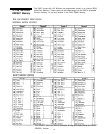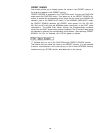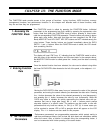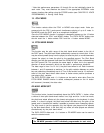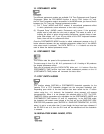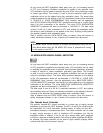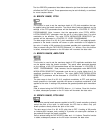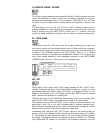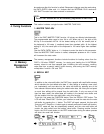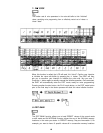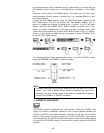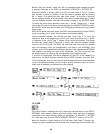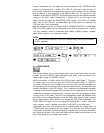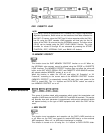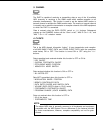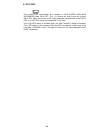
be used once after this function is called. Subsequent changes must be made using
the DATA ENTRY slider and -1/+1 buttons after the INTERNAL PLAY mode and
KEY SHIFT function have been entered in succession.
NOTE:
The KEY SET function can not be individually programmed for each voice.
This section includes a single function: MASTER TUNE ADJ.
4. Tuning Functions
1: MASTER TUNE ADJ
This is the DX27 MASTER TUNE function. All voices are affected simultaneously.
The programmable data range is from -64 to +63. When set to 0, the pitch of the
A3 key is the standard 440 Hz. At the lowest setting of -64, the overall pitch of
the keyboard is 100 cents (1 semitone) lower than standard pitch. At the highest
setting of +63, the overall pitch of the keyboard is 100 cents higher than standard
pitch.
Use the DATA ENTRY slider or -1/+1 buttons to enter the data for this parameter.
Once the MASTER TUNE function is called, subsequent presses on the 1 button
will increment the data value.
5. Memory
Management
Functions
The memory management functions include functions for loading voices from the
DX27’s 192-voice PRESET memory, for storing and loading the 24 INTERNAL
memory voices to and from cassette tape, initializing the voice memory, recalling
voice data from a special “safety” buffer memory, and turning the DX27 memory
write/protect function ON and OFF.
6: RECALL EDIT
In addition to the voice edit buffer, the DX27 has a special edit recall buffer memory
which maintains the last edited voice data. If, after editing or creating a new voice,
you inadvertently call new data into the voice edit buffer by pressing one of the
voice selector buttons before storing the edited voice data, the voice you had spent
so much time editing will be erased from the edit buffer. If only one error of this
type has been made, the edited data still resides in the backup voice buffer and
can be recalled into the voice edit buffer using this function.
To do this, first press the FUNCTION button, then the RECALL EDIT button. The
LCD will read “Recall Edit?” Confirm your intention to recall the data into the voice
edit buffer by pressing the +1 button. The DX27 will again respond, this time with
“Are you sure?” Press the +1 button again to actually execute the recall edit function.
The EDIT mode will then be automatically entered, and the voice edit buffer will
contain the data called from the backup voice buffer. Pressing another function
button, the PLAY mode button or the EDIT mode button during the above process
will abort the recall edit function.
17



